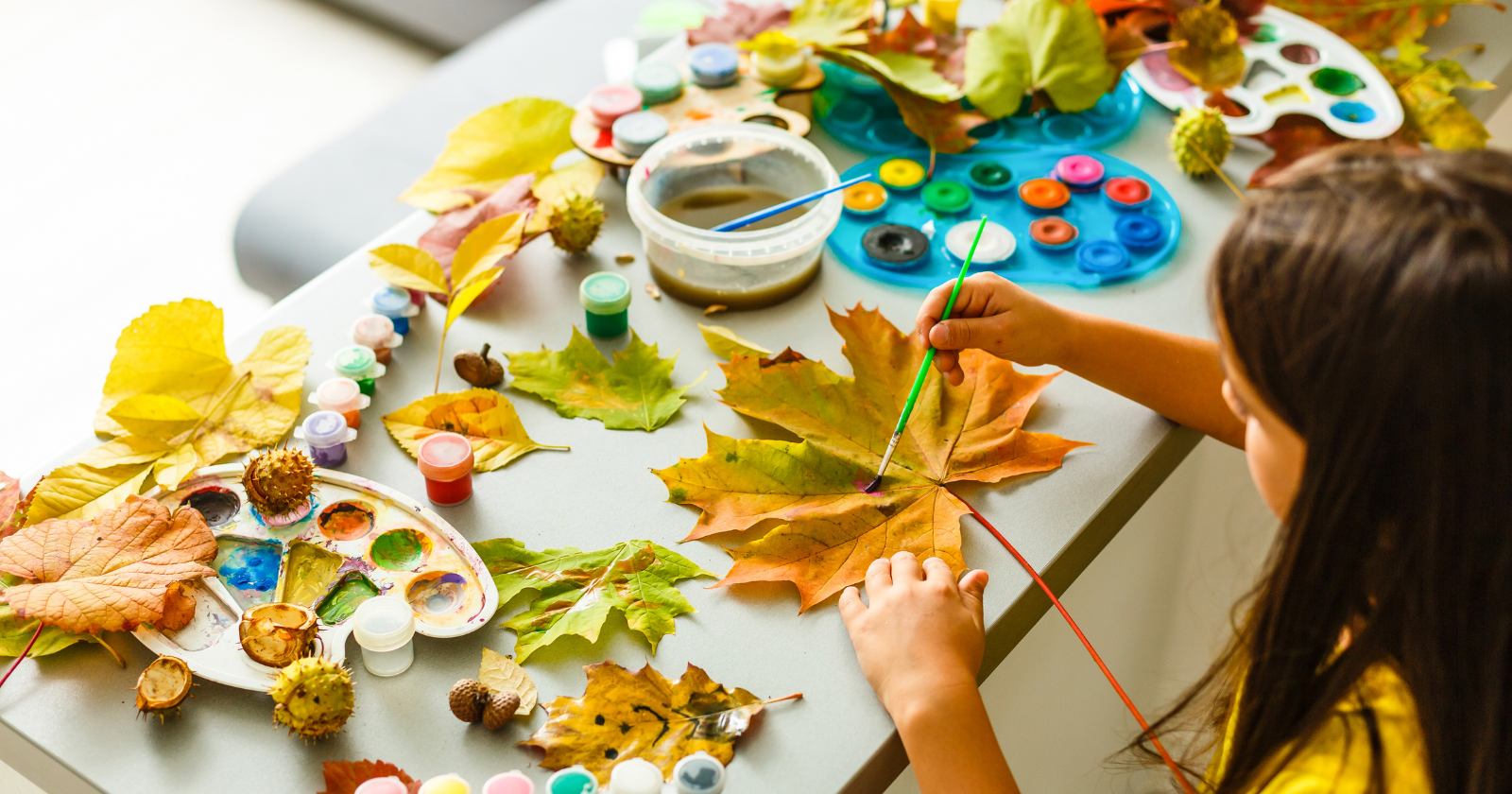As a mom, I’ve always believed that creativity doesn’t come from expensive art supplies. It comes from imagination.
And when you give kids the space to explore, even the simplest materials can turn into something wonderful.
Over the years, I’ve learned that crafting with children opens their eyes to the beauty hidden in everyday things.
A scrap of paper can become a butterfly, and a cardboard box can spark an entire world of imagination.
Whether it’s cardboard, pasta, or old magazines, there’s always magic waiting to be made.
Here are ten affordable craft ideas that feel special, look beautiful, and help kids discover the joy of creating.
1. Painted pasta jewelry
I still remember when my sons were little and proudly wore their “noodle necklaces” around the house.
We’d spend an afternoon coloring dry pasta with acrylic paint, then string them together using yarn.
To make it, lay out uncooked pasta shapes such as penne, rigatoni, or macaroni. Paint them in bright colors or metallic shades for an elegant twist.
Once they’re dry, thread them onto string or elastic cord to create necklaces or bracelets.
What I love about this craft is that it grows with your child. Younger kids focus on color play, while older ones can experiment with patterns and symmetry.
Related Stories from The Artful Parent
- You know you’re helicopter parenting when you can’t stand to see your child experience these 7 normal discomforts
- If your teenager uses these 9 phrases naturally, they communicate at a level most adults never reach
- The art of the playdate: 9 phrases that make other parents actually want to schedule a second one
And when they’re done, they get to wear their creations. A proud little fashion statement made from pantry leftovers.
2. Collage storyboards
Children naturally love stories. Give them old magazines, newspapers, or printed photos and let them create a collage that tells a story.
You’ll need scissors, glue sticks, and a large sheet of paper or cardboard. Encourage them to pick out faces, places, or objects that catch their eye, then piece them together into a visual tale.
When kids build a story with images, they’re learning how to express and organize their thoughts in creative ways.
It helps them make sense of feelings and ideas, even before they can fully put them into words.
Sometimes, I like to sit with a cup of tea and ask, “Tell me what’s happening in your picture.” Their answers never fail to surprise me.
3. Nature paintbrushes
This one’s pure outdoor fun. Next time you’re at the park or in your backyard, collect small sticks and leaves, bits of grass, or pine needles. Tie them to the ends of sticks using rubber bands or twine to make your own nature brushes.
Then bring out the paint and let your kids experiment. The different textures create amazing effects, leafy strokes, dotted patterns, and swirls you can’t get from store-bought brushes.
It’s a simple way to show that art can start anywhere, even on a walk.
It also sparks a deeper appreciation for nature, helping children see how materials around them can be reused in creative ways.
4. Recycled cardboard houses
Cardboard boxes might be the most underrated art supply ever. Cut, fold, and tape them into small houses or castles. Use markers, paint, or scraps of colored paper to decorate doors, windows, and rooftops.
When my kids were younger, we’d build entire neighborhoods on the living room floor. It became a full weekend project, complete with “roads” made from cereal boxes and cotton ball clouds taped to the wall.
As researcher Elizabeth Byrne from the University of Cambridge has noted, “If children are given the freedom to explore, but with some gentle guidance, it can be very good for their education – perhaps in some cases better than direct instruction.”
Projects like these do exactly that, offering structure without pressure and letting curiosity lead the way.
Every cardboard tower, crooked window, or hand-drawn sign becomes part of a world they imagined themselves, and that’s the real learning.
5. Salt dough ornaments
This craft doubles as a homemade gift idea and sensory experience.
Combine 2 cups of flour, 1 cup of salt, and about ¾ cup of warm water to make dough. Shape it into hearts, stars, or handprints, then bake at a low temperature (200°F/90°C) for about 2 hours.
Once cool, paint and decorate with glitter, buttons, or fabric scraps. Add a hole with a straw before baking if you want to hang them later.
Every ornament tells a small story, from a tiny thumbprint to a colorful swirl of paint. And when you pull them out next year, those memories come rushing back.
6. DIY suncatchers
This one looks like stained glass but costs almost nothing.
Cut the centers out of paper plates or cardboard frames. Then layer tissue-paper squares onto clear contact paper or plastic wrap. When light shines through, the colors glow beautifully.
I used to hang them on our kitchen window, where the morning sun made them sparkle. My youngest once said they looked like “rainbow pancakes,” which still makes me smile.
Research on art-based activities shows that engaging children with materials like colour and light allows them to explore and express emotions before they always have the words for them.
That means suncatchers aren’t just pretty, they’re a subtle way into emotional growth.
7. Egg carton flowers
If you have an empty egg carton, you already have the start of a craft garden. Cut out the cup sections, paint them, and glue them onto paper straws or sticks. Add buttons or beads to the center if you like.
Arrange the finished flowers in a jar or pot filled with rice or pebbles. They make charming little decorations for windowsills or tables.
The best part is that you can reuse the same carton for petals, leaves, and stems, so nothing goes to waste.
I’ve found that projects like these teach children to see potential in everyday materials, and that’s a life skill worth nurturing.
8. Memory collages in jars
This one began as a rainy-day experiment and turned into a family favorite.
Have your child fill a clear jar with tiny drawings, ticket stubs, pressed leaves, or scraps from old projects. It becomes a 3D scrapbook they can add to all year.
Every so often, we’d open one of ours and talk about what was inside. The concert ticket from a summer picnic. The doodle from a long car ride. The feather from a walk on the beach.
As Rudá Iandê wrote in Laughing in the Face of Chaos, “Memories aren’t meant to be trapped in the past. They’re reminders of who we’ve become.”
These jars do just that, capturing small moments that continue to inspire creativity.
9. Painted rock friends
Smooth stones make the perfect blank canvas. Wash and dry them, then paint faces, animals, or patterns using acrylic paint. When the paint dries, you can seal them with a bit of clear glue or varnish.
We used to leave ours along neighborhood trails for others to find. Sometimes, we’d spot a rock from another family, painted with cheerful words or hearts.
It felt like a tiny, silent community art exchange.
Small as they are, these painted rocks remind kids that creativity can be shared. And sometimes, kindness is the most beautiful form of art.
10. Homemade paper puppets
There’s something timeless about paper puppets. Cut out characters from cardstock, color them, and attach small craft sticks or straws to the back. Then use a shoebox or cereal box to create a little stage.
Children can act out their own plays, tell stories, or even make up songs. It’s storytelling, performance, and art all in one.
When my sons made their first puppets, the show was about a superhero dog who saved the world from boredom. I still have that little paper dog tucked away somewhere.
According to child-development experts at The Genius of Play, imaginative play helps children “develop empathy, problem-solving, and communication skills,” as they explore the world through creativity and pretend roles.
Puppet-making may look like a simple pastime, but it quietly builds confidence and understanding in the gentlest way.
Final thoughts
Crafting with kids goes far beyond making something to display.
It becomes a shared moment of discovery, a bridge between imagination, materials, and the bond you build together.
When children make something with their own hands, they discover independence and pride. And when we join them, we’re reminded that creativity doesn’t need to be polished to be meaningful.
So the next time your child asks to make something, don’t worry about the cost or the mess. Gather a few supplies, roll up your sleeves, and start.
Because long after the glue dries and the paint fades, what stays are the memories, the laughter, the patience, and the shared joy of making something beautiful together.



